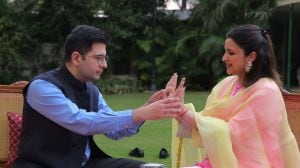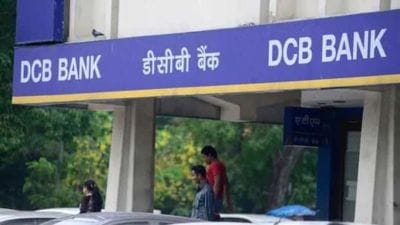By now, we all have realised the scale of the Covid-19 pandemic that has caused over 597 million cases and 6.45 million confirmed deaths worldwide, and counting, making it one of the deadliest in history. What people from this generation also learnt for the first time in their lives was the implementation of the several interventions that followed, most notably the lockdowns that encompassed curfews, quarantines, stay-at-home orders, and other such restrictions, since the outbreak in early 2020.
While the intentions were noble and the restrictions were established in a bid to reduce the spread of SARS-Cov-2—the virus that causes Covid-19—one cannot deny the fact that the repeated and prolonged lockdowns have also had social and economic impacts. It is the latter that Madan Sabnavis, chief economist at Bank of Baroda, attempts to analyse in his latest book, Lockdown or Economic Destruction?.
Sabnavis takes a balanced approach in dissecting the lockdown and its implications on the economy at both the micro and macro levels. In 21 chapters and a little over 200 pages, he lays out the various issues that came up during the lockdown and the unlocking process and which caused considerable damage to the economy, with commonly held views and counterviews supported by facts.
Also Read: Book Review | An abridged history of independent India
He starts with a ‘prologue’ describing the way people in India look at the lockdown and the epidemic months after the economy was subjected to a panic exercise—scenes that could be replayed anywhere else in the world. He then talks about the ‘unlocking’ phases and the awkward questions that were raised when they started.
“Admittedly, several measures have been taken to alleviate the suffering. But, were they adequate or just too conservative? Could the government have done more? It is left to the reader to decide if this was inevitable or necessary or just another blunder,” he writes.
The chapters that follow have been neatly divided into four sections. Sabnavis takes a newspaper-like approach when he talks about the ‘experiences’ in a no-holds-barred manner—what each and every person in the country had to go through. For instance, initially, the definition of ‘essential goods’ was quite nebulous—milk could be delivered to homes, but delivery chains were stopped across borders which put a question mark on whether you could get it at the regular time. Similarly, printing of newspapers was permitted by the Centre, but the local authorities came in the way and did not allow circulation. Sabnavis does a brilliant job in refreshing readers’ memories on the ‘micro woes’ that held true for everyone, as they were universal in India.
Sabnavis then moves on to the ground-level situation that was evolving after months of the lockdown. Here, he captures some of the ‘revelations’ based on media reports at different points of time since the lockdown was announced. “These numbers may or may not have been realised finally as these were thoughts expressed by the industry, which held firmly in the first two months when the lockdown was total. They were quick calculations based on what appeared to have been the cost in the immediate run given the seasonal factors which drive most businesses,” he writes.
The author talks about how various sectors were suffering losses or were severely impacted on account of the restrictions. He backs them up with media reports and analyst surveys to provide a sample of the disruptions caused across the industry due to the lockdown.
An interesting chapter is on the migrants and how they became the first set of people to be affected. “The issue of migrants was probably the biggest scar in the country post the announcement of the lockdown,” he writes. Rightly so. With factories and workplaces shut down, millions of migrant workers had to deal with the loss of income, food shortages and uncertainty about their future. Subsequently, thousands took to their journey back home, mostly on foot, with no means of transport due to the lockdown. As per reports, over 190 migrant workers died due to the lockdown, with road accidents being the primary reason.
“While it would be fair to say that things would return to equilibrium after a couple of years, the interim period will be one of uncertainty for this class of labour. There could clearly be a division of migrants that would return to the urban areas depending on the pace of normalcy being achieved and those that would prefer to be in their rural habitat and seek work within these confines which could be in farming or alternatively in smaller businesses in manufacturing and services,” he writes.
Commenting on the ‘macroeconomic effects’, Sabnavis writes how GDP became the first casualty. He writes how technically India went into a recession for the first time with two successive negative growth rates in the April-September 2020 period.
To get an idea of how GDP gets affected the logical way, Sabnavis looks at the various segments that comprise the total output. Mining took a hit due to uncertainty over availability of labour, manufacturing was pushed back due to the shutdown on both the demand and supply sides, electricity generation was another victim of a slump, construction was a washout, the category of trade, transport, hotels, and restaurants was most sharply impacted by the lockdown, and so on. “The implication is that a full year has been lost in terms of value addition in the economy and this also means that whatever growth is witnessed in FY22 would at best bring us back to where we were on the eve of the lockdown,” he writes.
Sabnavis also talks about the SMEs, an important part of our economic narrative, and what the shutdown meant for them; as well as the collapse of investments and how the lockdown impacted investment decisions. With the lockdown coming in the last week of March, there were disruptions in the supplies of farm products which had an adverse impact on inflation. Sabnavis shows how this transpired.
The author also writes about how the effects of the lockdown were felt quite sharply on the corporate sector where company performance was affected. “It was a kind of double whammy for the corporates because even prior to the lockdown the sector was under stress with sales being under pressure for several sectors due to demand being lack lustre. Further, companies have also been striving hard to beat the issues of NPAs especially those in the infra-related space,” he notes.
The best part of the book comes towards the end when Sabnavis ruminates about what industries must do and reinvent to adjust to the new world where “certain norms have to be pursued for an undefined period of time”.
Hotels will need to look at their models closely; automobiles will witness cross currents; real estate will have to contend with differing forces; airlines will have to adjust their pricing and costs keeping in mind that the capacity utilisation levels would be fairly volatile; and so on.
The lockdown was a shocker in the sense that no one knew as to how it had to be interpreted. But what the book does is to give a set of arguments and conclusions that are free of emotions. It is a must-read for anyone who wants to know about the pros and cons of an unprecedented decision in Indian history.
Lockdown or Economic Destruction?
Madan Sabnavis
Atlantic Publishers and Distributors
Pp 222, Rs 595









